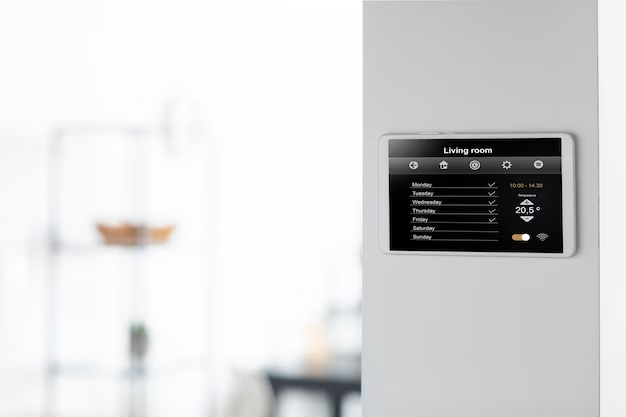Adjusting Your Samsung Refrigerator Temperature: A Comprehensive Guide
The modern refrigerator is a marvel of convenience, seamlessly integrating technology to ensure your food stays fresh and safe. Among the various brands, Samsung stands out for its sleek designs and innovative features. If you're grappling with maintaining just the right temperature in your Samsung refrigerator, you're not alone. In this guide, we'll dive into everything you need to know to adjust the temperature on your Samsung refrigerator, ensuring optimal performance and longevity for your stored items.
The Importance of Correct Refrigerator Temperature
Maintaining the right refrigerator temperature is essential for keeping your food fresh, safe to eat, and reducing the risk of spoiling. The ideal temperature range for a refrigerator is generally between 35°F and 38°F (1.6°C to 3.3°C). This range keeps bacteria at bay while preserving the flavors of your food. Freezer compartments, on the other hand, should ideally be set at 0°F (-18°C).
Common Signs of Incorrect Refrigerator Temperature
Ensuring that your refrigerator is set to the correct temperature is key. Here are some signs that the temperature might not be optimal:
- Food Spoilage: If your food spoils faster than expected, the refrigerator may be too warm.
- Frost Build-Up: Excessive frost in the freezer compartment can indicate that it's too cold.
- Inconsistent Temperatures: Temperature fluctuations can lead to some areas being colder than others.
How to Change the Temperature on a Samsung Refrigerator
Changing the temperature setting on a Samsung refrigerator varies slightly with different models. However, the general principles remain the same across most models.
Using the Control Panel
- Locate the Control Panel: Generally found on the front of the door on newer models, older units may have this inside.
- Navigate Menus: On models with digital displays, use the up and down arrows to adjust the temperature. Look for buttons labeled “Fridge” and “Freezer.”
- Confirm Settings: Once you've selected the desired temperature, press the "Set" or "OK" button to confirm the new settings.
Step-by-Step Guide for Specific Models
Family Hub Models
- Swipe or Tap the Display: These models feature a touchscreen interface.
- Select the Fridge or Freezer Option: Tap to access the temperature controls.
- Adjust the Temperature: Use the on-screen slider or plus and minus buttons to set the desired temperature.
Older Models with Analog Controls
- Locate the Dial or Knob: These are usually found inside, either at the top or along the side wall.
- Adjust the Dial: Turn the knob to adjust the temperature. Numbers on the dial typically represent temperature levels—higher numbers mean colder settings.
Maintaining Optimal Refrigeration
Proper maintenance is crucial for ensuring your refrigerator functions effectively. Here are some tips:
Regular Cleaning
- Interior Cleaning: Wipe shelves and surfaces with a mild detergent solution every few months to prevent odors and bacteria growth.
- Coil Cleaning: Dust off condenser coils found at the back or underneath the fridge at least twice a year to improve efficiency.
Avoid Overloading
- Efficient Air Circulation: Ensure there's some space around all items in the refrigerator and freezer for air to circulate.
Monitor Door Seals
- Inspect and Clean Seals: Regularly check the door seals for any cracks or wear. Keeping them clean ensures a tight seal, helping to maintain the correct interior temperature.
Resolving Common Temperature Issues
Sometimes, even with proper settings, you may encounter issues. Here’s how to troubleshoot common problems:
Refrigerator Not Cooling Properly
- Check for Power Issues: Ensure the refrigerator is plugged in and functioning.
- Inspect Air Vents: Blocked vents can prevent cold air from circulating.
- Test the Thermostat: Use a thermometer to check if the temperature matches the set levels.
Freezer Too Cold or Frosty
- Door Seal Inspection: Ensure no gaps exist in the seals.
- Temperature Adjustment: Lower the temperature setting if frost builds up.
Technology Enhancements in Samsung Refrigerators
Samsung refrigerators come with a variety of smart features to ensure ease of use and functionality:
Digital Inverter Technology
- Energy Efficiency: This technology adjusts compressor speed to match cooling demands, saving energy and reducing noise.
Smart Features
- Wi-Fi Connectivity: Some models allow you to monitor and control the temperature via a smartphone app.
Quick Reference Guide: Temperature Adjustment Tips
Here’s a quick summary of the steps and tips discussed to help you effectively manage your Samsung refrigerator’s temperature settings:
- 🔍 Identify Your Model: Know your refrigerator’s model to follow the correct procedure.
- 📈 Set Optimal Temp: Fridge (35°F-38°F), Freezer (0°F).
- 🔧 Use Control Panel: Locate and adjust using the digital display or analog controls.
- 🧹 Maintain Regularly: Clean interior and coils; inspect seals frequently.
- 📱 Leverage Smart Features: Utilize compatible apps for remote control and monitoring.
In Closing
Setting and maintaining the correct temperature in your Samsung refrigerator is critical for food safety, efficiency, and longevity. By following this guide, you can confidently adjust your settings and troubleshoot common issues, ensuring your refrigerator works at its best. Taking advantage of technology and regular maintenance will help you keep everything fresh and ready to enjoy. So, next time something seems off, you'll know just how to tackle it!
